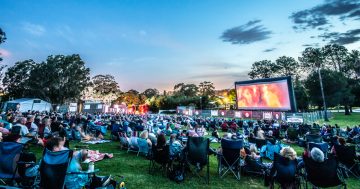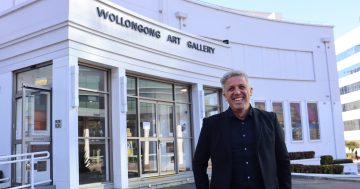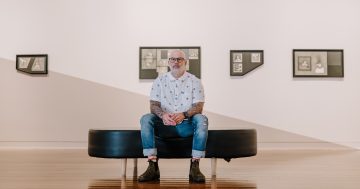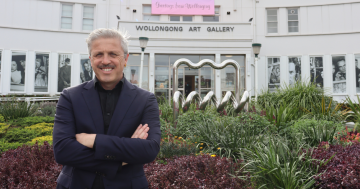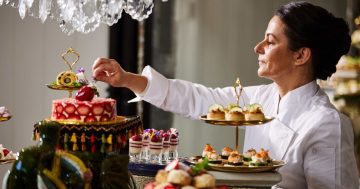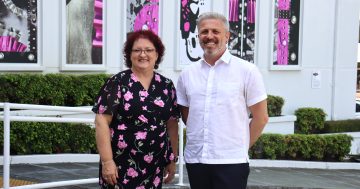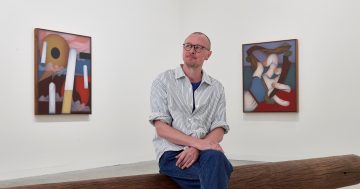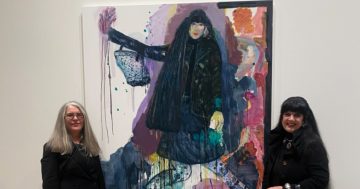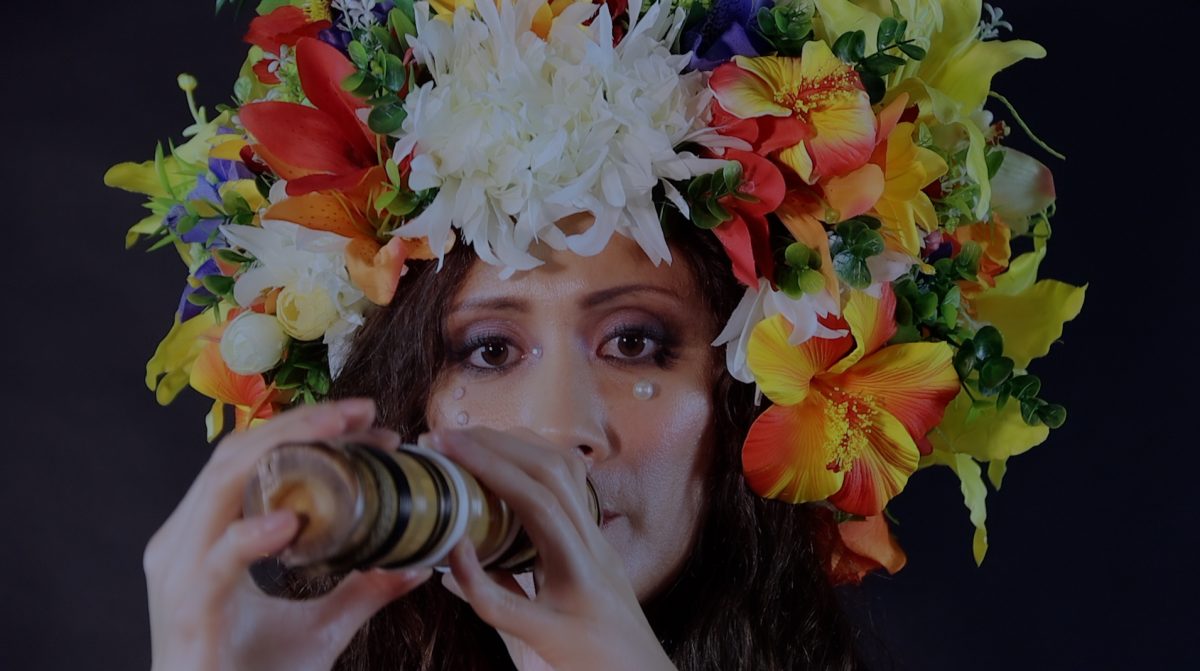
The traditional Tongan nose flute, the fangufangu, is central to Adriana Māhanga Lear’s exhibition at Wollongong Art Gallery. Photo: Fakafoa–The Body Breaks in Waves, Adriana Lear.
If you’re in need of a balm for grief or disconnection, get yourself to the Wollongong Art Gallery.
Wollongong-born, queer Tongan-Australian artist Adriana Māhanga Lear’s Fafangu: to awaken is a sensory feast on display.
The deeply immersive work includes visual elements alongside rich soundscapes and performance to create a deeply immersive experience.
It explores ancient Tongan ideas and practices related to sound, death, place, gender and sexuality with a particular focus on Indigenous mourning practices and the fangufangu, a traditional Tongan nose flute.
The exhibition is Adriana’s gift to her community, and one she said was returned with a warm hug.
“I wanted to exhibit at the Wollongong Art Gallery to share my work with not only my Tongan family but the wider Pacific community in the Illawarra,” she said.
“It’s not the first thing people think about Wollongong, but there are so many of us here and it was wonderful to see so many of us come to the opening; it was a really beautiful experience for me.
“Growing up, Wollongong was a kind of harbour where I looked out over the Pacific, metaphorically and literally. I grew up with my mum’s family who moved here after she married my father.
“My idea of Tonga as a kid walking in the sand was that it was across the sea, literally. Wollongong is also where I grew up with my father’s family who have been in the Illawarra for at least six generations.
“This is a homecoming.”
The exhibition is part of Adriana’s PhD research, and was painstakingly built up over five years of research, consultation with Tongan elders and knowledge holders, travel to Tonga and exploring museum collections, as well as conversations with her Tongan PhD supervisors.
The impact of colonialism and Christianity on Tongan practices and their reclamation are explored through the work.
Adriana said her research brought her into a deep personal connection with the past – and she was able to bring that past to life for her audience.
“I’m always interested in our history, our older practices, what we can learn from them and what they tell us about our living traditions pre-European impact,” she said.
“We have this proverb, ‘we walk forwards into the past and backwards into the future’.
“That’s why we think of our ancestors as living because they’re here leading us forward. It’s why I love engaging with museum archives and collections.
“When I got to play fangufangu as part of my research, some of their voices had been silenced since the 1800s.
“It was literally breathing life into them, just by touching the instrument and hearing it’s tones I learnt so much that can’t be put into words.
“The sounds are so ancient; they’re unlike the sounds we hear in our everyday life now. It’s a completely different sonic world.
“Some of my work replicates those frequencies, and the impact and response from elders who might have heard those sounds when they were young is like awakening a memory.”
The idea of being in conversation with a living past underpins Adriana’s exhibition.
History is not behind a sealed case into a museum; it is something we interact with at every turn.
This conversation became particularly important as she worked through her own profound experiences of grief and change during the pandemic.
“Understanding our older practices became a vaka, or a vehicle, for me as well,” she said.
“How do you integrate guidance from the past so it continues as a living practice rather than something static and repetitive?
“It’s incredible to think we are dealing with the things humanity has always dealt with and we can connect to the past and learn from it in our own way.
“Part of that work is demystifying some of the romanticism of the past and giving it a critical eye.
“I see my works as speaking back to existing colonial and ethnographic records and museum archives written about us.”
Originally commissioned and presented by Casula Powerhouse Arts Centre in 2024, Fafangu: to awaken went on to exhibit in Tāmaki Makaurau/Auckland before arriving in Wollongong.
Wollongong Art Gallery Director Daniel Mudie Cunningham was full of praise for the exhibition and said it invited the audience into a deep, reciprocal relationship.
Adriana invited viewers to find solace in that relationship, especially those dealing with their own grief.
“Come if you would even like to sit and just have the sounds and visuals wash over you,” she said.
“It’s a way to engage with and lean into our shared humanity.”
Fafangu: to awaken is on exhibition at Wollongong Art Gallery until 7 September.








